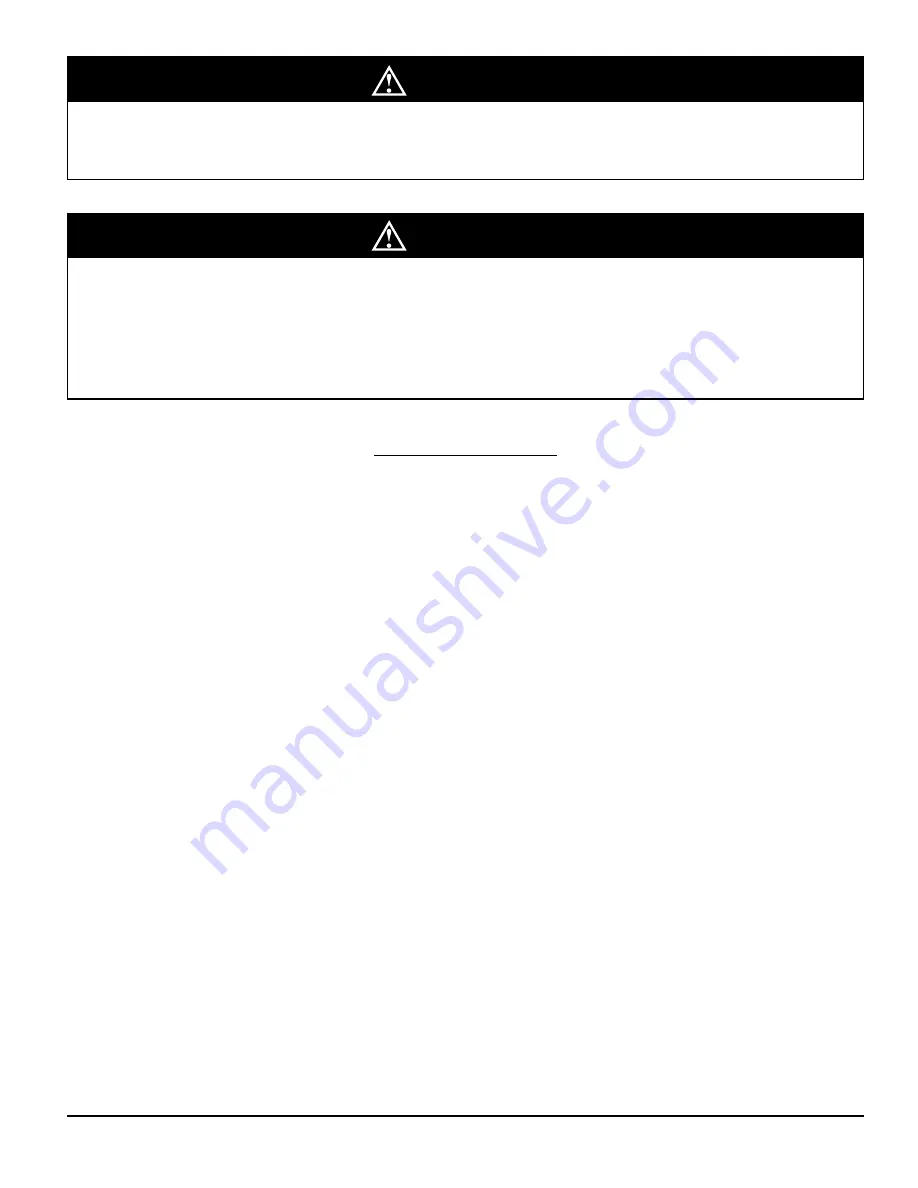
3
dust. Fiber drums or plastic drums should only be
used for collecting wood chips or saw dust.
10. Keep away from unit while it is operating.
a. There is a very high speed blower wheel inside of
the blower housing that can amputate fingers and
grab loose clothing or neckties.
b. There is also a very high speed cooling fan on the
top of the motor that must be avoided for the
same reasons as mentioned in item (a.) above.
11. This unit is heavier than the legs it sits on and can
be overturned if not placed on a clean, flat, level sur-
face. The holes provided in each foot should be used
to anchor the dust collector to the floor.
Never
install any casters or movable platform to the
feet.
12.
These dust collectors are very heavy.
Do not
attempt to lift this unit in any way without the use of
an approved lifting devise such as a hoist, lift truck
or crane. Lifting this unit by hand can cause a severe
back injury.
13.
These dust collectors should not be used to col-
lect both saw dust
and
metal dust
. Hot metal
embers or chips could ignite saw dust in the drums
below the cyclone and/or dust bag. Any used or
reclaimed wood should be checked for hidden or
embedded metal nails, screws or fasteners before
machining to eliminate any metal pieces going into
the drums with any wood dust. This type wood
should first be checked with a magnet.
READ
ALL
SAFETY RULES AND WARNINGS BELOW
BEFORE
PROCEEDING
WITH
ANY
ASSEMBLY, OPERATION, INSPECTION OR MAINTENANCE
OF
ANY
PART OF THIS DUST COLLECTOR SYSTEM.
The National Fire Protection Agency (NFPA) Standard 484 requires specific dust collector and
duct work design, configuration and maintenance when collecting any potentially reactive metal dust.
The National Fire Protection Agency (NFPA) has defined the following materials as “reactive metals”;
Aluminum, Magnesium, Tantalum, Titanium and Zirconium
The dust collectors in this manual ARE NOT designed to meet NFPA Standard 484 and therefore,
ARE NOT APPROVED for use in the collection of any reactive metal dust.
SAFETY RULES
It is your responsibility to follow
all
local electrical and safety codes including
the National Electric Code (NEC), the Occupational Safety and Health Act (OSHA)
and the Environmental Protection Agency (EPA).
1. You are responsible for installing, operating and any
maintenance of this dust collector in accordance with
all local and national electrical codes as specified by
the National Electric Code (NEC).
2. All electrical connections and wiring of this dust col-
lector should be performed by a qualified licensed
electrician in accordance with all electrical codes.
This dust collector must be grounded in accordance
with National Electric Code (NEC) requirements.
3. Replacement of any damaged or worn power cables
must be done immediately by a qualified licensed
electrician.
4. The power cable must be protected and not allowed
to come into contact with any sharp objects, grease,
oil, hot surfaces or chemicals. Never allow the power
cable to become kinked or knotted.
5. Make sure that the power source to the dust collec-
tor motor conforms to the motor requirements.
6.
Disconnect or lock out the dust collector motor
from the power source and let the motor come to
a complete stop BEFORE attempting ANY type of
cleaning, inspection, servicing or moving of this
unit including removing the dust bag.
7. DO NOT OPERATE THIS UNIT WITHOUT THE DIS-
CHARGE GUARD AND DUST BAG IN POSITION.
8. Always wear safety glasses when working around or
performing inspection or maintenance on machinery.
9. Only metal drums should be used below the cyclone
and the dust bag if you are collecting metal grinding
WARNING!
WARNING!

























